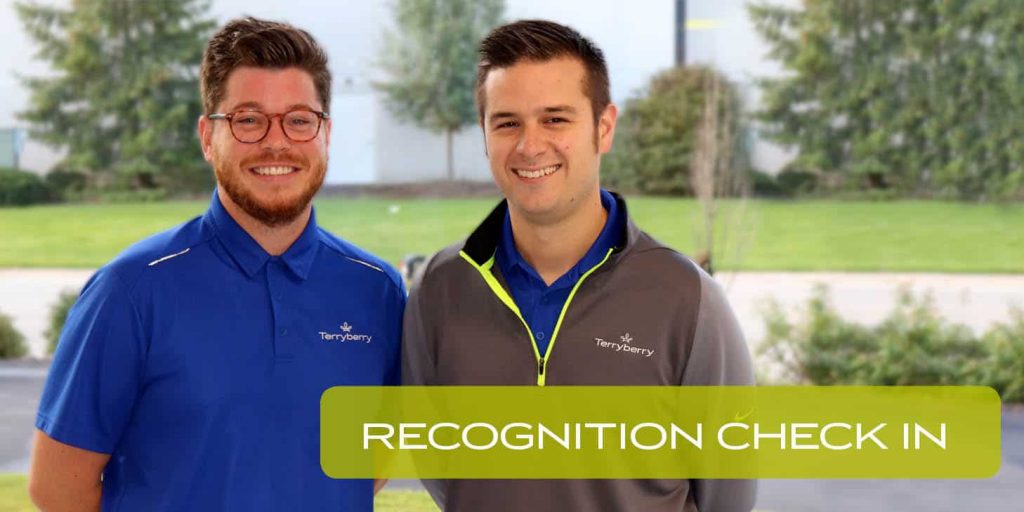October 7, 2019


We’re in the final stretch of the calendar year. It’s the season of performance assessments, program reviews, and personal inventories. This time of year, many of us contemplate how well things are going. What was successful? What could change to achieve our best potential? This means a formal review process for some. For others, it’s a casual “gut-check”. However you approach your procedure, it is healthy to reevaluate your recognition strategy. In this article, we’ll focus on how to perform a year-end review for employee rewards and recognition programs.
For Terryberry’s Alex Bisel and Jared Evans, evaluating the success of employee recognition programs is, quite literally,
For Terryberry’s Alex Bisel and Jared Evans, evaluating the success of employee recognition programs is, quite literally, a full-time job. Alex and Jared are members of Terryberry’s Customer Success team. Their day-to-day routine involves:
- Analyzing data from clients’ recognition programs.
- Comparing to benchmarks.
- Asking questions about what worked and what didn’t.
As a result, they can provide recommendations about how organizations can increase the positive impact of their employee rewards and recognition programs.
In light of the new year, organizations with employee recognition programs may be taking a moment to evaluate the effectiveness. We asked Alex and Jared for their advice on conducting a review for rewards and recognition programs. Check out their top 5 “Recognition Program Review” questions. Find out what areas to focus on for improvement in 2020.
Bonus: Check out Terryberry’s Recognition Check-up for a self-evaluation questionnaire.
1. How do staff members perceive employee rewards and recognition experiences?
In order to aOur goal is to maximize the positive impact the recognition program has on all employees in the organization,” says Jared. Therefore, compelling recognition moments must be positive and memorable.
Create recognition moments to remember with a tangible reminder after the moment has passed – with this in mind, this could be a physical recognition award to enjoy, a photo of the event, or a written record of the recognition.
Another practical tip: Make sure to create a comfortable environment for the individual recipient. “Learn how your employees want to be recognized, whether that is more privately or publicly?” asks Jared. It’s ok to ask!
2. Do employees know the organization’s core values?
Are the values of your organization communicated? Is recognition connected to behaviors that reinforce the core values of your organization? Overall, it’s important to be sure staff members get the message about how their specific contributions support the big picture goals.
“Awareness of the mission, vision, and values undoubtedly creates a clear focus and goal for employees to achieve,” says Alex. “Without recognition of these core values, the impact of the recognition and rewards program won’t be as great as it could be.”
3. How involved are managers in recognizing their teams?
We’ve all heard that employees don’t leave companies. They leave managers. In contrast, the reverse is also true. Surprisingly, companies don’t encourage people to be their best… people encourage people to be their best. Be sure to evaluate how effective your recognition program is in creating opportunities for managers to recognize their teams.
“Time and time again, statistics prove that the more engaged managers are in the recognition program, the more willing employees are to also engage,” says Alex. “This includes leadership buy-in at the very top. Those in management roles love receiving recognition just as much as employees do.”
4. How can staff give feedback on the employee experience, including recognition?
“Create a survey to measure how employees want to be recognized, awareness of the recognition program, and perception of the awards they receive,” says Jared. Unquestionably, regular employee feedback can provide insights to “determine what leads to changes in the retention and morale, for better or worse.”
5. In what ways does your organization communicate recognition to employees?
Count the touchpoints your recognition program has with your staff. Think about all the ways you communicate with employees: newsletters, meetings, posters, etc. Consider ways that these communication tools can be infused with recognition.
“It’s a great idea to lead off regular standup meetings between managers and direct reports with recognition, especially if there is a certificate or tangible item involved,” says Alex. “Aditionally, This provides employees with visibility around the employee recognition program and provides managers the opportunity to lean into the core values we mentioned earlier.”
Request a Professional Assessment of your Employee Rewards and Recognition Program
All things considered, if you are interested in a professional assessment of your organization’s employee rewards and recognition and rewards program, contact Terryberry, or complete an online recognition program assessment.

